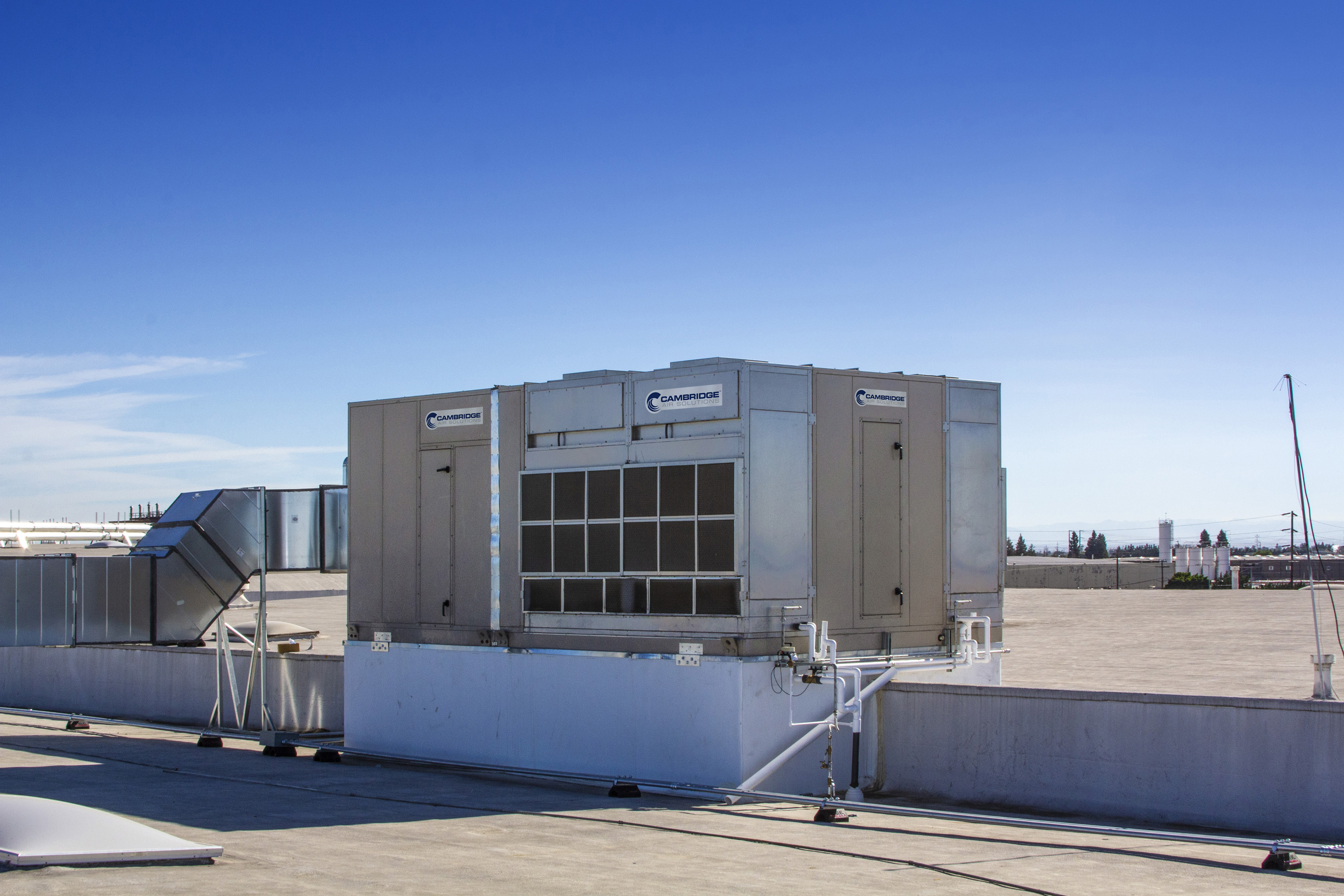Manufacturer invests in two-stage evaporative cooling for better IAQ management
A West Coast corrugated box manufacturer started with one factory serving local businesses in Modesto, California. Over the years, they have expanded their Modesto cardboard box operation by adding even more corrugating machines, a larger building, greater heat load, and larger exhaust loads which has challenged their efforts to achieve proper IAQ.
Fortunately for this Southern California location, the manufacturer was able to use several two-stage evaporative cooling units to help. A two-stage evaporative cooling solution (indirect/direct) provides the most advanced tempered cooling system that uses evaporative cooling technology. The combination of both indirect and direct evaporative technology provides a sizable temperature depression of 33°F. On a 100°F day, that’s a “leaving-air” temperature of 67°F using 100% outside air.
According to the American Society of Heating and Engineers (ASHRAE), advanced two-stage evaporative cooling technology can use 60%- 75% less electricity than conventional refrigerant-based AC systems. For a 30 ton cooling unit, an IDEC unit could reduce carbon emissions by up to 1 metric ton of CO2 for every 100 hours of unit operation compared to a similarly sized DX cooling unit, Now, the cost of acquisition for a two-stage unit is more than a direct evaporative unit but still less to operate than direct expansion. For the end-user, the ability to choose the type of evaporative technology, direct/indirect/two-stage, allows them to match their IAQ requirements and their cost criteria to create a solution that meets their needs.
Indirect cooling is often paired with a second direct evaporative cooling stage, to temper the supply air further while adding some moisture to the supply air. Such two-stage systems (referred to as indirect-direct or IDEC systems) can meet the entire cooling load for many buildings in arid to semi-arid climates. IDEC systems provide cooler supply air at a lower relative humidity than direct evaporative coolers. The first indirect stage cools the supply air without increasing humidity. Since the air is cooled, it has a reduced capacity to hold moisture. The air is then passed through a direct stage, which cools the air further while adding moisture. IDEC systems typically have an effectiveness of 100% to 115%, cooling the air to a temperature slightly below the outdoor air wet-bulb temperature.
IDEC systems used in arid climates (with a design wet-bulb temperature of 66°F or lower) can have power consumption as low as 0.22 kW/ton, much lower than compressor-based cooling which can have power consumption on the order of 1 kW/ton. However, in more humid climates indirect-direct systems have less power reduction and energy savings. For dry climates, where evaporative cooling can meet the entire load, peak-demand is dramatically reduced. When evaporative cooling is used in tandem with supplemental DX cooling, it can reduce the DX cooling required. Moreover, since they use 100% outside air for cooling, the right evaporative cooling system can improve indoor air quality.
